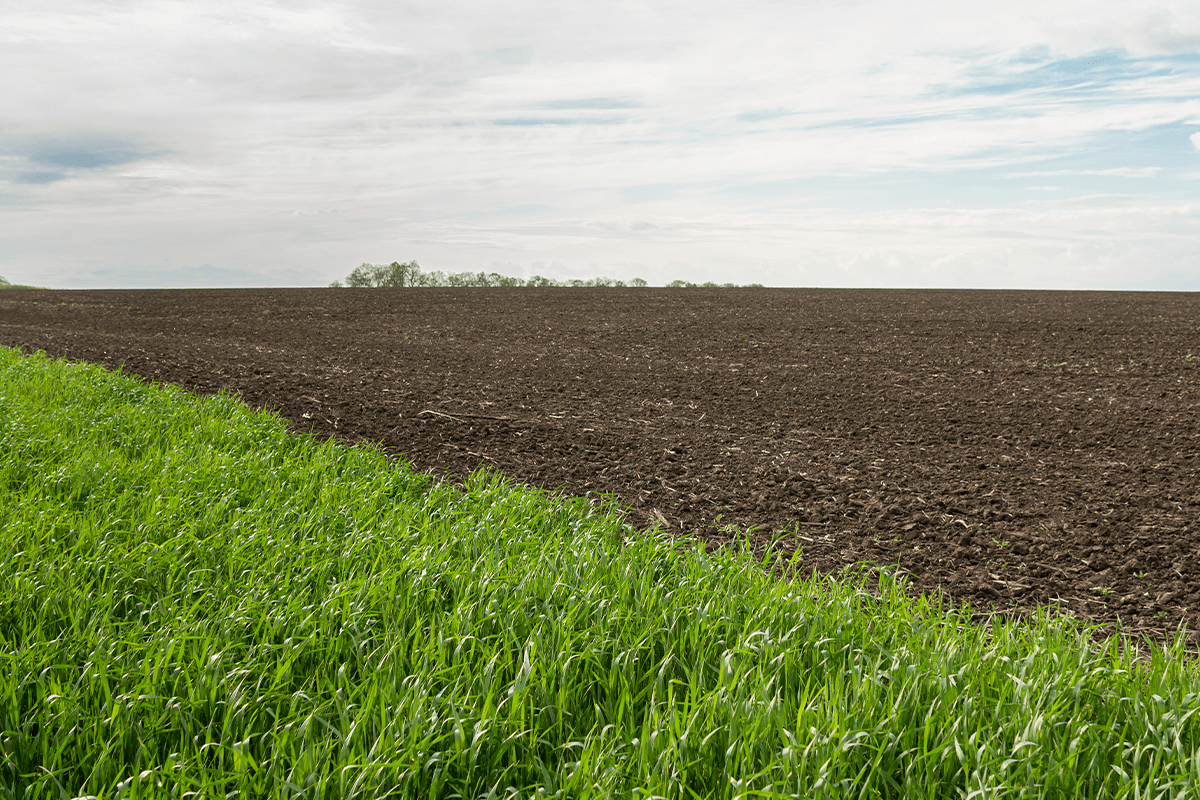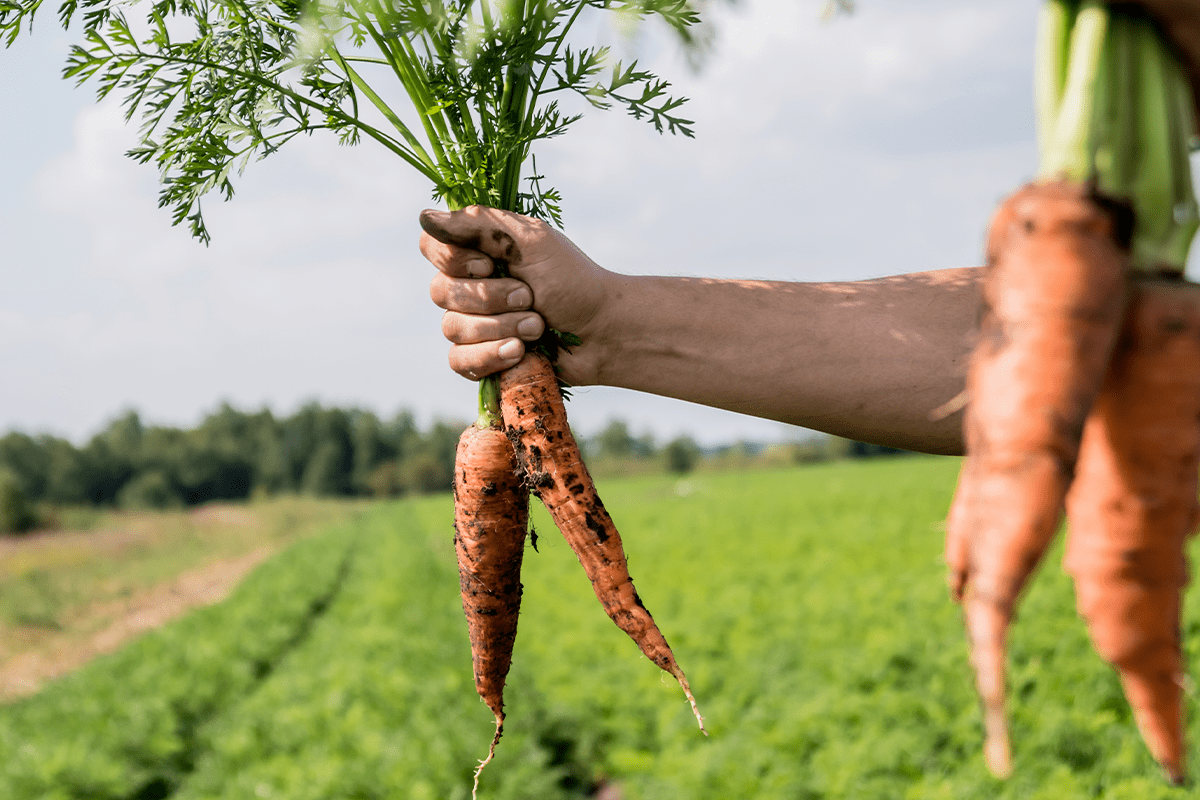When thinking about agriculture, what comes to mind first? Rolling fields of monoculture crops? Rows of factory-farmed animals? The truth is, conventional agricultural practices have been putting a heavy strain on the environment, depleting soil nutrients, polluting waterways, and contributing to changing environmental conditions. But what if things could be turned around? Farming practices could become not only sustainable, but also regenerative—a force for good that restores the land, conserves resources, and nourishes communities. In this article, we’ll explore how.
 Rye crop field. Regenerative agriculture.
Rye crop field. Regenerative agriculture.
What is regenerative agriculture?
Thanks to the pioneering work of farmers leading the way to a more sustainable future, regenerative agriculture is gaining momentum worldwide. Regenerative agriculture is a holistic approach to farming that focuses on the health of the soil, the biodiversity of ecosystems, and the wellbeing of communities. Regenerative farmers aim to mimic nature’s cycles and processes, using practices that build soil health, reduce carbon emissions, conserve water, and promote diversity.
The principles and benefits of regenerative agriculture
One of the key principles of regenerative agriculture is soil health. Healthy soil is alive with a complex network of microorganisms, fungi, and other creatures, creating a rich, nutrient-dense environment for plants to grow. Regenerative farmers use techniques such as cover cropping, crop rotation, and no-till farming to promote soil health and fertility. They also avoid using synthetic fertilisers and pesticides, which can harm the soil and the ecosystem. The net effect, aside from the direct benefit to plants, is the fact that healthy soil captures much more carbon dioxide from the atmosphere.
Another principle of regenerative agriculture is safeguarding biodiversity. Regenerative farmers recognise the importance of preserving and enhancing the natural diversity of the ecosystem, including native plants, animals, and insects. They use techniques such as agroforestry, intercropping, and rotational grazing to create a balanced and resilient ecosystem.
Nonetheless, regenerative agriculture is not just about the environment—it’s also about people. Regenerative farmers aim to create thriving communities connected to the land and each other. They often sell their products directly to consumers through farmers’ markets, community-supported agriculture (CSA) programmes, or online platforms. This direct connection between farmers and consumers fosters a sense of trust, transparency, and accountability.
 Field of young green wheat and empty field. Crop rotation.
Field of young green wheat and empty field. Crop rotation.
Learn more about carbon farming and its benefits
Regenerative agriculture in practice
So, what does regenerative agriculture look like in practice? There are many inspiring stories of farmers who have transformed their land and their livelihoods through regenerative practices. DGB Group’s agroforestry projects in Cameroon and Kenya rely on regenerative farming principles to build soil health and enhance biodiversity while minimising the use of synthetic fertilisers, pesticides, and herbicides. The implementation of these projects is done in collaboration with local communities who have the chance to learn all the ins and outs of these methods and adopt them in the long term, thus spreading such beneficial practices.
Regenerative agriculture and sustainable development goals
Regenerative agriculture is not a niche movement but a powerful solution to some of the most pressing challenges we face, from climate instability to food insecurity. By supporting regenerative farmers, we help create a more sustainable and just food system for all. Regenerative agriculture can contribute to achieving the United Nations Sustainable Development Goals, especially those related to hunger, poverty, climate action, and biodiversity.
Discover the full potential of your land
Challenges and opportunities for regenerative agriculture
Of course, there are also challenges and opportunities for regenerative agriculture. One of the main challenges is the limited awareness and support from policymakers and consumers. Many people are still unaware of the benefits of regenerative agriculture, and governments often prioritise industrial agriculture over small-scale, sustainable farming. This can make it difficult for regenerative farmers to access resources, markets, and financing.
However, there are also many opportunities for regenerative agriculture to grow and thrive. As more people become aware of the benefits of sustainable farming, the demand for regenerative products is increasing. This has led to emerging new markets, such as regenerative food hubs, online marketplaces, and regenerative supply chains. There are also initiatives such as the Regenerative Organic Certification, which aim to set a standard for regenerative agriculture and help consumers identify products that are produced using regenerative practices.
 Farmer holding freshly harvested organic carrots.
Farmer holding freshly harvested organic carrots.
Sustainable agricultural practices: DGB’s trust in a greener future for all
Regenerative agriculture is not just a buzzword—it’s a movement that is changing the face of agriculture and creating a more sustainable and just world. At DGB, we firmly believe that the future of agriculture lies in sustainability. Regenerative agriculture offers a holistic and innovative approach to farming that not only helps to restore the health of the land but also promotes the wellbeing of communities and the planet. This is why our large-scale projects incorporate various sustainable farming techniques, including principles of regenerative agriculture. We also train local farmers to use these techniques and ensure the sustainable development of their land.
By supporting sustainable agricultural practices, including carbon farming, regenerative agriculture, carbon capture and agroforestry, we contribute to creating a more resilient and sustainable future for all. Let’s continue to work towards a greener and healthier world together.
Join the sustainable revolution
- SEO Powered Content & PR Distribution. Get Amplified Today.
- Platoblockchain. Web3 Metaverse Intelligence. Knowledge Amplified. Access Here.
- Minting the Future w Adryenn Ashley. Access Here.
- Source: https://www.green.earth/blog/cultivating-the-future-how-regenerative-agriculture-is-transforming-sustainable-farming



